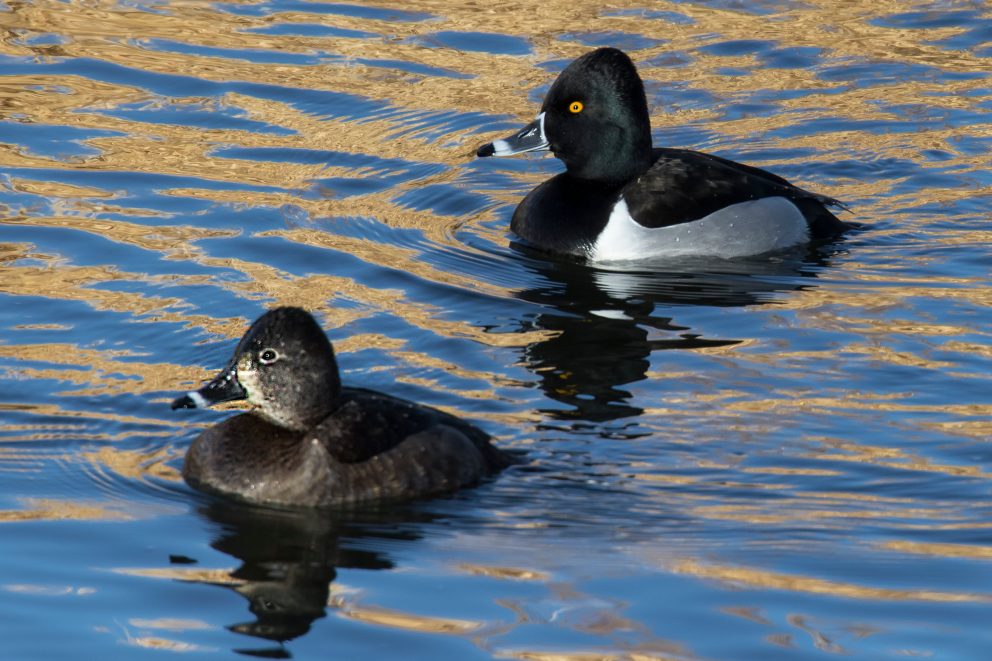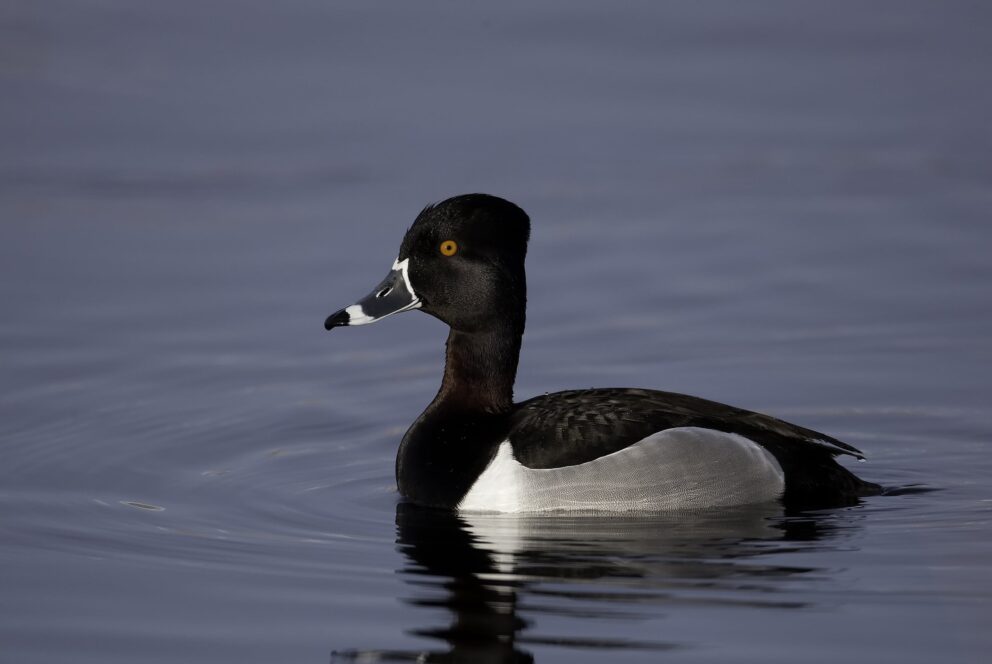- SCIENTIFIC NAME
- Aythya collaris
- CLASSIFICATION
- Bird
- LIFE SPAN
- 6-10 Years
- SIZE
- 15-18” | 1-2lbs
- STATE CONSERVATION STATUS
-
- State Protected
- FEDERAL CONSERVATION STATUS
- Least Concern
- GAME STATUS
- Game
- GAME TYPE
- Waterfowl
- Washoe
- Humboldt
- Pershing
- Churchill
- Mineral
- Lyon
- Douglas
- Carson City
- Storey
- Elko
- Lander
- Eureka
- White Pine
- Esmeralda
- Nye
- Lincoln
- Clark
Habitat & Range
The Ring-necked Duck uses smaller bodies of water than other diving ducks. They prefer shallow bodies of water such as marches, river floodplains, beaver ponds, and reservoirs. In Nevada, they are more often seen in the wintertime and when migrating north for the summer.
- Lakes and reservoirs
- Marsh
- Rivers and streams
Threats
- Drought
- Habitat Loss
- Water Diversion
- Wildfires
Natural History
Ring-necked Ducks are omnivores and will eat both aquatic plants and animals. Mollusks, snails, worms, leeches, and other aquatic macroinvertebrates. They are diving ducks so they will completely submerge themselves to forage for food that may be on the bottom of a shallow body of water. When diving, they usually consume their food during their dive.
These ducks are monogamous and form long-term pair bonds. Breeding occurs in northern North America during the summer. Nests are built on the edge of water features using the surrounding vegetation. The female lays between six and fourteen eggs in their nests. The male Ring-necked duck does not assist with incubation or after hatching. Within a day the young ducks are able to swim on their own, although they need their mom to help them find food.
Fun Facts














